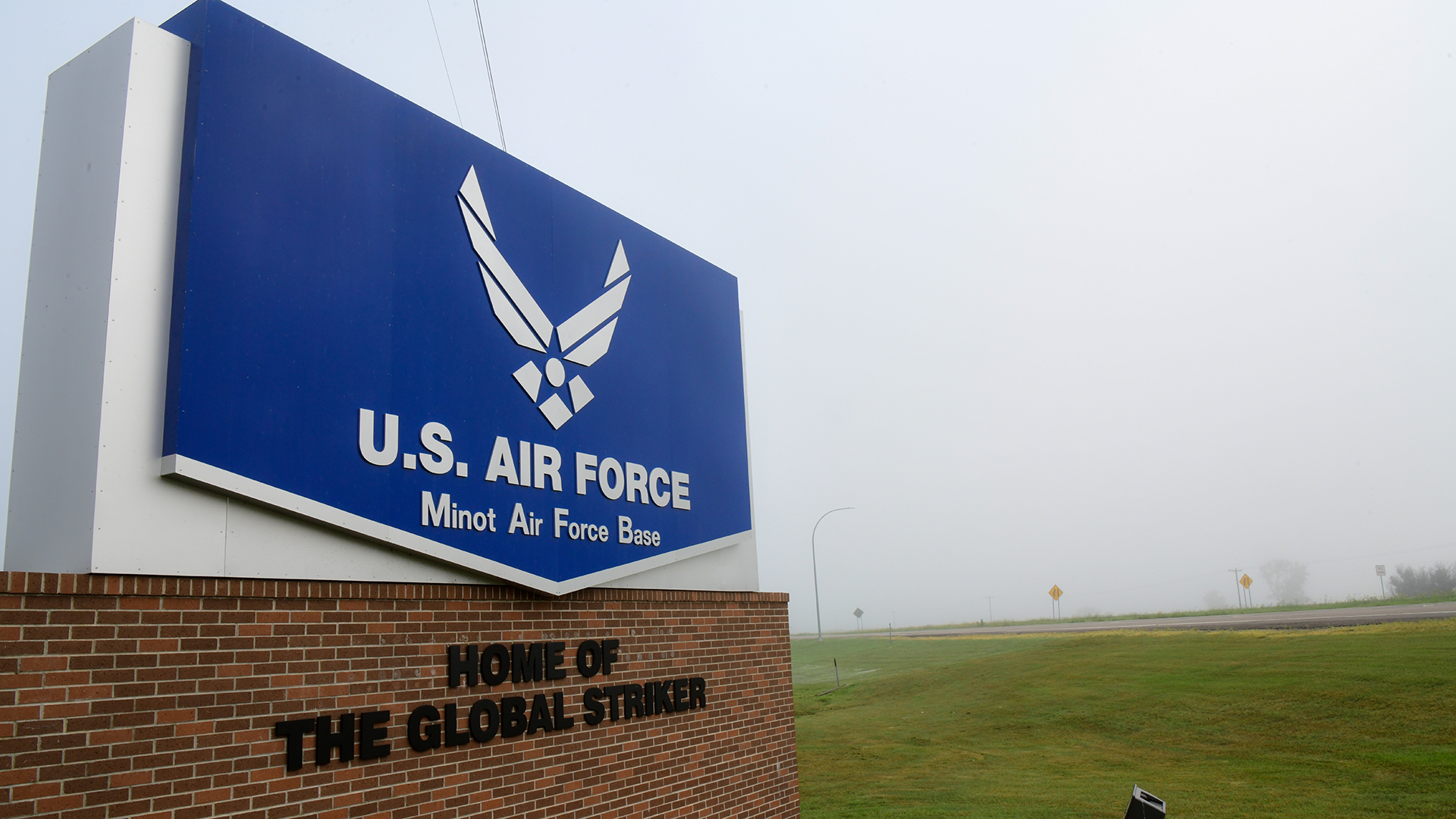

The U.S. Air Force has detected elevated amounts of polychlorinated biphenyls, or PCBs, at Minot Air Force Base. It is the second time the chemicals — which are linked to cancer — have been found at a nuclear missile base. As a result, the Air Force is ordering a clean up of Minot and two other bases to “mitigate” the potential risk to service members.
The Air Force released the findings from Minot on Thursday, Aug. 24. It was the third set of results that Air Force Global Strike Command, which oversees the nation’s intercontinental ballistic missiles, shared in August, and comes after elevated amounts of PCBs were found at Malmstrom Air Force Base in Montana.
Air Force Global Strike Command is currently undergoing an extensive, two-part study to research links between ICBM-related service and cancer. The sample collection at Minot and other bases are part of that wider study. Teams collected samples from launch control centers (LCCs) and launch control equipment buildings (LCEB), underground facilities where the country’s missile teams work at the bases.
Subscribe to Task & Purpose Today. Get the latest military news and culture in your inbox daily.
“Based on these survey results, I directed Twentieth Air Force to take immediate measures to mitigate exposure by our Airmen in all locations where PCBs were detected,” Gen. Thomas Bussiere, head of Air Force Global Strike Command, said in a release. “In addition, we will begin immediately cleaning PCBs in all LCCs and LCEBs where PCBs were detected, regardless of whether they met EPA standards for mitigation. Further rounds of testing for PCBs will take place in all these locations to help us measure the effectiveness of our mitigation efforts.”
Teams with the U.S. Air Force School of Aerospace Medicine and the Defense Centers for Public Health collected hundreds of samples at Minot Air Force Base to test for PCBs. All of the air samples did not show any signs of PCBs. However, 30 of the 300 surface swipe samples did show traces. Two of them exceeded the Environmental Protection Agency’s threshold. Those two were found in the same launch control center.
Tests at Wyoming’s F.E. Warren Air Force Base found traces of PCBs, but not above the EPA’s threshold, the Air Force announced earlier this month.
The EPA says that studies of PCBs show evidence for “potential carcinogenic and non-carcinogenic effects of PCBs” and that “different health effects of PCBs may be interrelated.” The chemicals were outlawed by Congress in the Toxic Substances Control Act in the 1970s.
Bussiere promised additional updates on the status of PCBs at the bases, and said that the Air Force will be hosting townhalls with Air Force and Space Force personnel to share their concerns.
The latest on Task & Purpose
- Woman sentenced to 30 years in Vanessa Guillén murder
- C-130s are getting World War II-style makeovers for next year’s D-Day anniversary
- U.S. military preparing for possible evacuation of Niger drone bases
- What is happening inside the Afghan resistance?
- What’s happened since the Taliban took over Afghanistan?